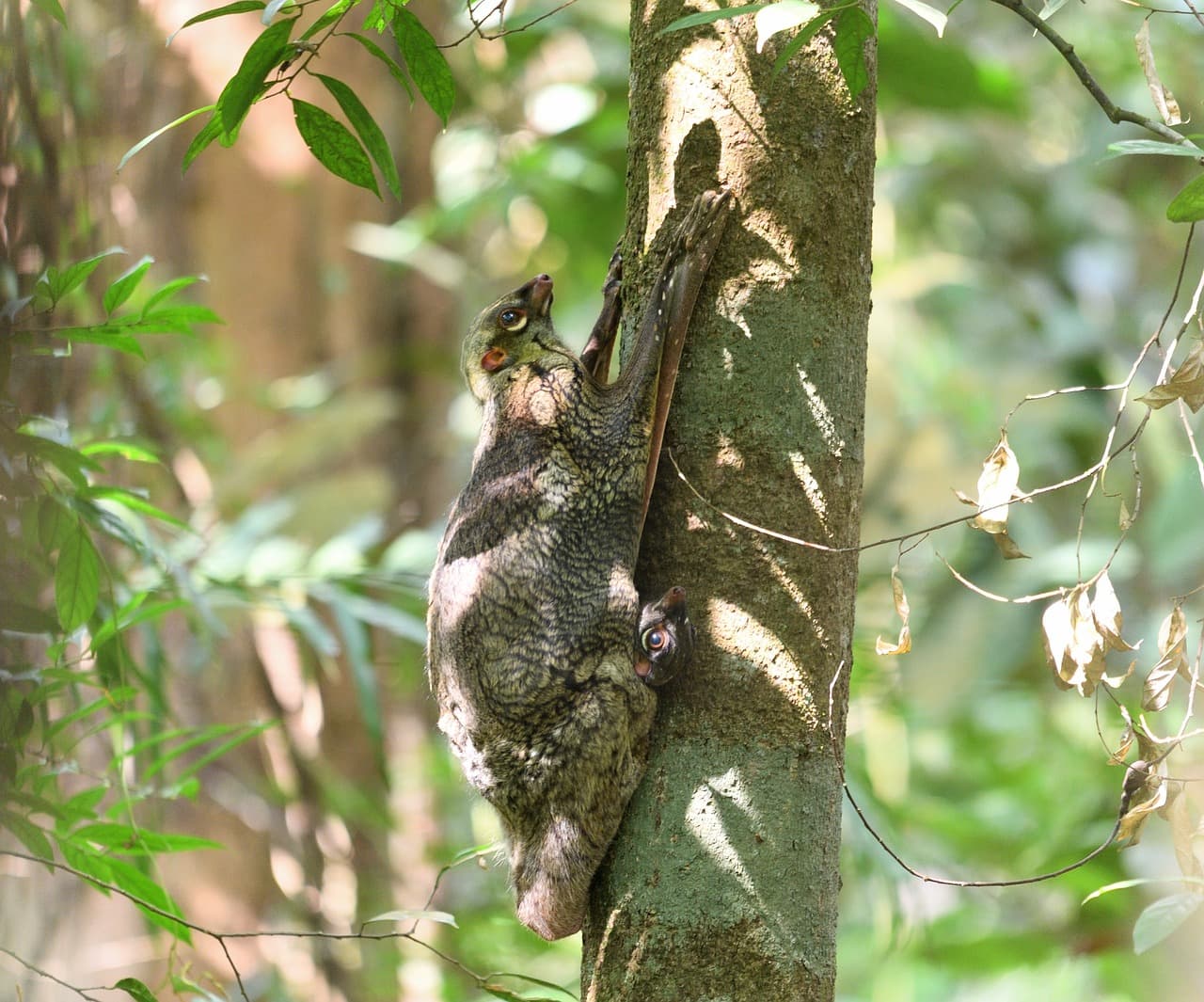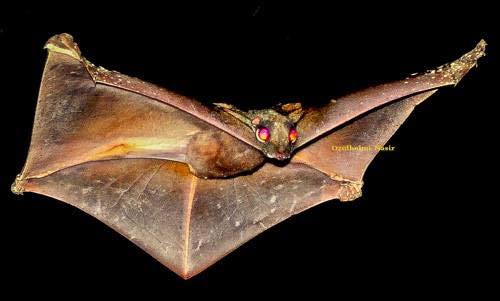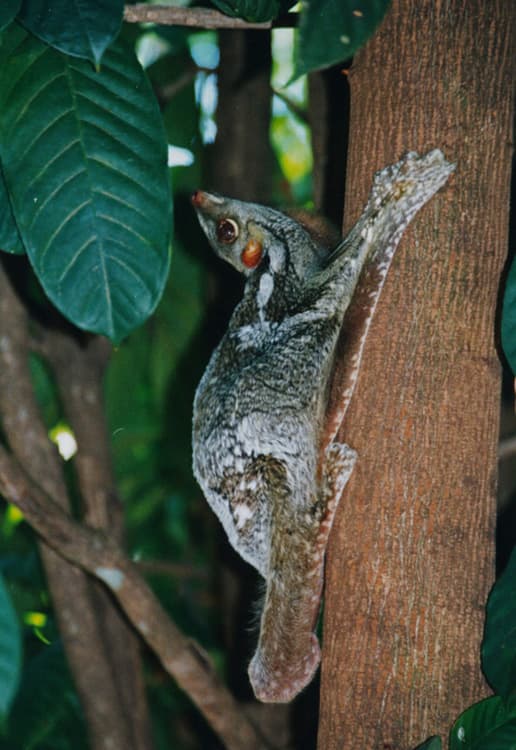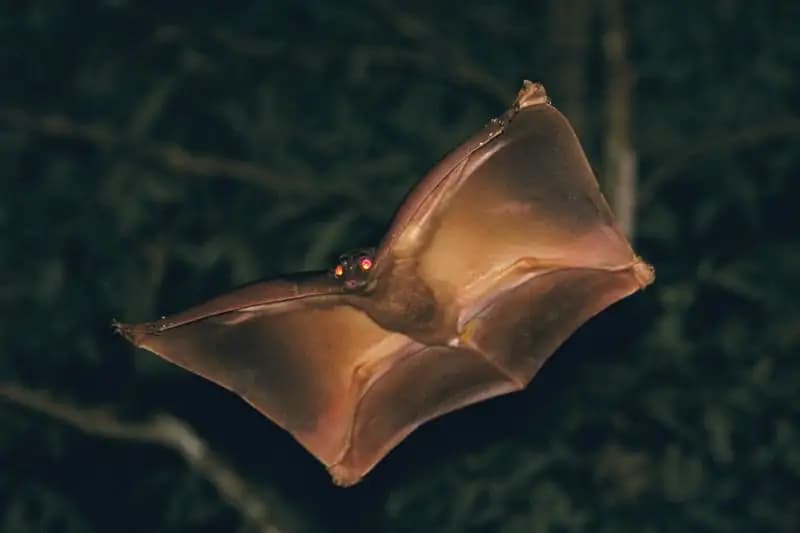With a few other names such as Malayan colugo, Malayan flying lemur, and Sunda colugo, this flying lemur is quite interesting. Not different from other “flying” mammals, Sunda flying lemur (ឆ្មាបា) do not technically fly, and we will discuss the details below. This lemur species is still doing well thanks to the protection by law in many countries. Let’s check out some more information about them with me, shall we?
Appearance

The head-to-body length of a Sunda flying lemur is between 33 to 42 centimeters. Meanwhile, the tail is from 18 to 27 centimeters long. It has a small head with large forward-facing eyes and small ears. Their large eyes have strong night vision and depth perception that help them see at night. A Sunda flying lemur’s fur is dense and mottled, with black, gray, red, or white dorsal fur and pale underside. In spite of mostly feeding on leaves, this lemur species has 34 carnivore-like teeth along with unique comb-shaped bottom incisors.
As for the gliding membrane, it connects from their neck which extends along their limbs to their fingertips, toe tips, and nails. They can extend this gliding membrane to about 70 centimeters with the help of an extensor muscle. The gliding membrane aka patagium, allows a Sunda flying lemur to glide over a distance of 100 meters. Along with that, their webbed feet and strong claws provide them with a grasp to hold on to tree branches when they land. The coolest part is that their soles can form suction cup shapes to increase the grip. The grasp also helps them to climb trees easily and fast which is beneficial in food foraging and staying away from predators.
Behavior

Despite the name, this lemur species glides among trees instead of flying. They are nocturnal and strictly arboreal, so coming to the ground is not something that they do. These arboreal animals spend their entire lives in the treetop of tropical rainforests. Simply because they are almost helpless when on the ground as their skills are for in the trees. Sunda flying lemurs are skillful climbers, and of course, incredible gliders. More than that, they also have the ability to maneuver and navigate while gliding though strong rain and wind can affect them.
Feeding & Habitats

When the night comes, flying lemurs come out to feed on soft plant parts such as flowers, fruits, shoots, and young leaves. Besides these, Sunda flying lemurs also feed on buds, flowers, and shoots of coconut trees, durian trees, and other trees. Another interesting thing is that they also lick tree bark of some tree species to obtain minerals, nutrients, salts, and water. And remember their unusual lower incisors? They use them to scrape up sap from trees or to strain fruits and flowers, how cool right?
The population of Sunda flying lemurs is widely distributed throughout Southeast Asia including Cambodia, Indonesia, Laos, Malaysia, Thailand, and Vietnam. When it comes to habitats, these lemurs are common in many different vegetation types. Some of those are coconut plantations, fruit orchards, gardens, primary and secondary forests, rubber plantations, and tree plantations. At the same, they also adapt to lowland dipterocarp forests, lowland forests, mangrove swamps, mountainous areas, and upland forests.
Threats
Local people often hunt them by using spears or other lethal equipment, mainly for their meat and fur. Besides hunting, habitat loss due to deforestation also plays a part in the decline of their population as well. Even competition for food with the plantain squirrels can be a challenge to their survival sometimes. The only good thing is that their population is now considered Least Concern on the IUCN Red List.
Related Post: Flying Lizard Species In Cambodia
